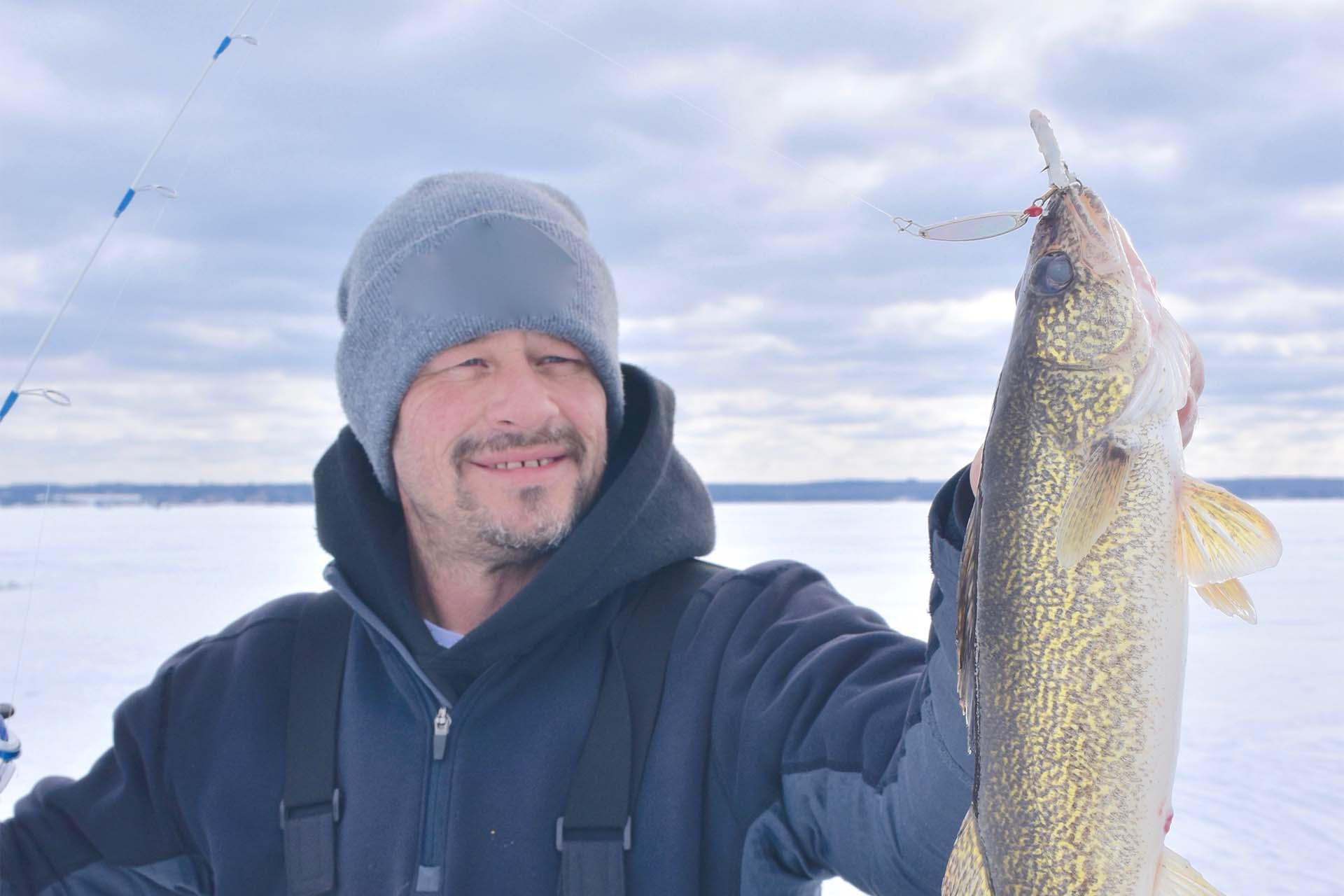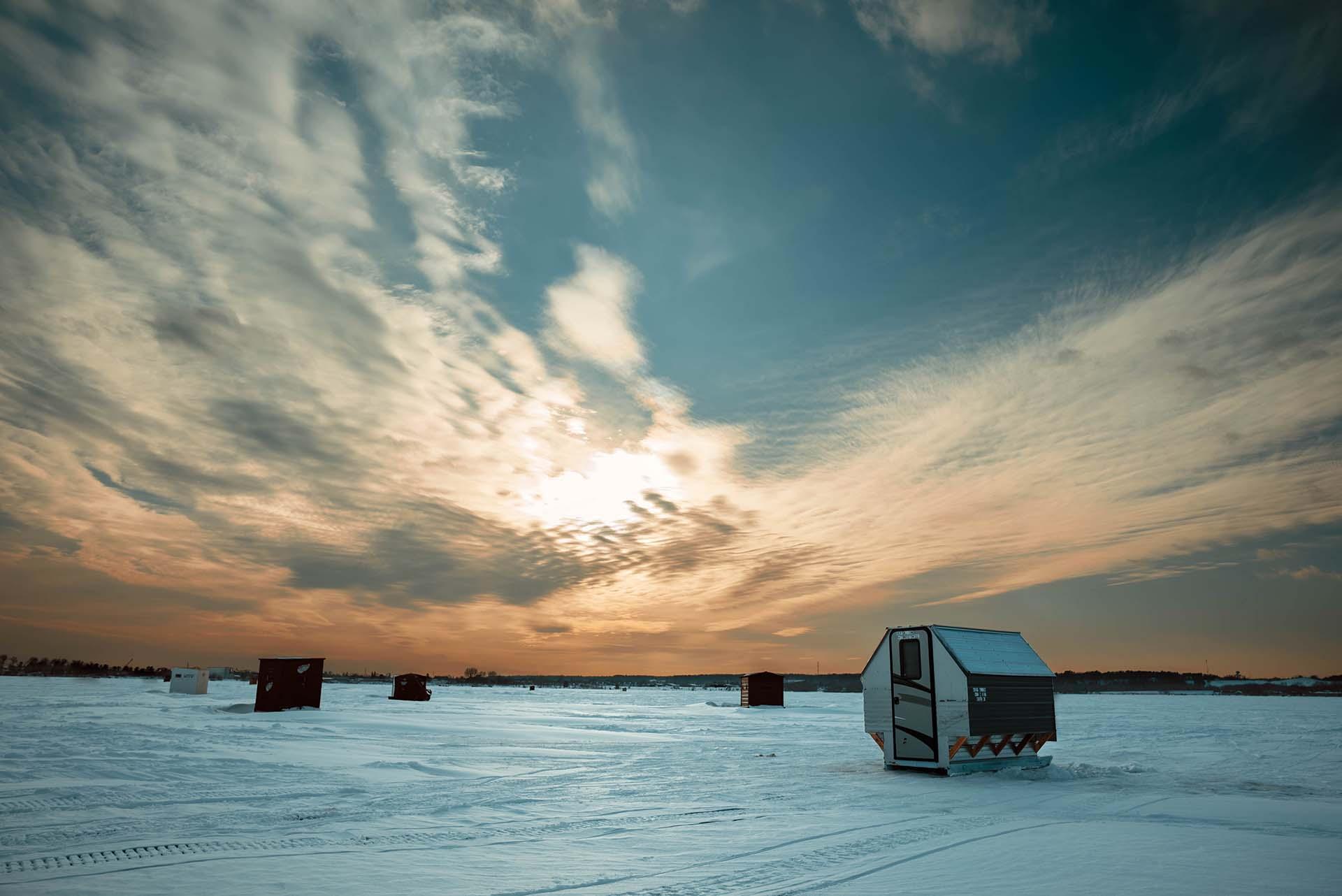
Ice Fish in Escanaba’s Stocked Waters: Trophy Walleye Await
Michigan’s commitment to sustaining its freshwater ecosystems is evident in its annual stocking efforts. In 2024 alone, the Michigan Department of Natural Resources (DNR) stocked over 9.7 million fish in waters across the state. A significant portion of these fish were released into Michigan’s Upper Peninsula, ensuring abundant, year-round fishing opportunities. Among these, Lake Michigan’s Little Bay de Noc stands out as a premier fishing destination, home to a diverse fishery that draws anglers from near and far.
One of the most exciting recent stocking efforts took place in the fall near Escanaba when the DNR’s Northern Lake Michigan Management Unit stocked 5,351 fingerling walleye in five locations on Little Bay de Noc. These young walleye, carefully raised in state-of-the-art hatcheries, represent just a small portion of the fish you’ll find beneath the ice. This stocking initiative is part of a larger, ongoing program that rears fish for up to 1.5 years before releasing them into carefully selected locations across Michigan. The goal? To create sustainable fisheries that support memorable fishing experiences while preserving the health of the state’s aquatic ecosystems.
Why Add Escanaba to Your Ice Fishing Bucket List
Escanaba’s fishing scene is perfect for anglers of all skill levels from experienced anglers to those new to ice fishing. Its robust fish stocking program, well-maintained waters and strong community create an unbeatable winter fishing destination that’s proud to be called the Walleye Capital of the Upper Peninsula.
Why the Michigan DNR Stocks the Little Bay de Noc
Stocking efforts in Little Bay de Noc focus on creating a fishery that anglers can enjoy year after year. By releasing walleye at an optimal size, the DNR ensures these fish will continue to grow, attract more fish and sustain the natural food web. The same careful attention is given to other species all aimed at improving fishing conditions.
Stocking fish in the Bay serves two primary purposes:
Enhancing Recreational Fishing Opportunities:
Michigan is home to millions of anglers, both residents and visitors, who rely on thriving fish populations for successful outings. Stocking efforts ensure a diverse and sustainable fish population, giving anglers consistent opportunities to catch everything from walleye and perch to northern pike. With Michigan’s rich freshwater resources, stocked fish help meet the high demand for year-round fishing, particularly in areas like Little Bay de Noc.
Restoring Stressed Fisheries:
In many Michigan lakes and rivers, natural reproduction of fish has been impacted by habitat loss, overfishing and environmental changes. Fish stocking helps restore these depleted populations by introducing species that support natural food webs and ecological balance. This has been particularly critical in areas like the Upper Peninsula, where stocking has been instrumental in revitalizing native fish communities.
How the DNR Takes a Holistic Approach to Michigan's Fisheries Management
Michigan’s rich fishing traditions are backed by a thoughtful management system. Each regional management unit within the DNR oversees not just the Great Lakes but also the interconnected inland lakes, rivers and streams in its territory. These units are staffed with dedicated fisheries biologists and technicians who play a vital role in maintaining the state’s essential aquatic ecosystems.
Their work is multifaceted: conducting research, performing surveys to monitor fish populations, coordinating with hatcheries to determine stocking priorities, setting fishing regulations and collaborating with local research stations. This comprehensive approach ensures that every decision contributes to the sustainable management of Michigan’s fisheries, benefiting both the Great Lakes and the inland waters they support.
The DNR’s fish stocking program is highly meticulous, matching species and strains to the specific habitat conditions in each waterbody. By raising fish in hatcheries that simulate natural environments, stocked fish are more likely to adapt and thrive without negatively impacting existing aquatic life. This careful planning is crucial in ensuring that stocked fish contribute positively to both the fishing experience and the ecological health of Michigan’s waters.
What You Need to Know Before Wetting Your Line in Escanaba
If you’re new to ice fishing or considering a winter adventure in Escanaba, here’s what you need to prepare for:
- Targeted Species: The stocked walleye in Little Bay de Noc draw most anglers, but the bay also offers excellent opportunities for catching perch, northern pike, bass muskellunge (Muskie), salmon, steelhead, lake trout and panfish.
- Local Expertise: Local bait shops and fishing outfitters in Escanaba are well-equipped to help you find the right gear, provide tips on fishing techniques and even direct you to prime fishing locations.
With each fish caught in Escanaba, you’re benefiting from decades of dedicated work by the DNR and local conservationists. This isn’t just about catching fish — it’s about becoming part of a centuries’-old tradition of thoughtful conservation and thrilling outdoor adventure that defines Michigan’s magnificent fresh waters.
Plan Your Escanaba-Area Fishing Trip Before the Ice Melts
Discover more about the best ice fishing opportunities in Escanaba. Then book your stay near the Big or Little Bays de Noc or our nearby inland lakes. Some lodgings will even cook your catches for you. Looking forward to seeing you on the ice until April!






